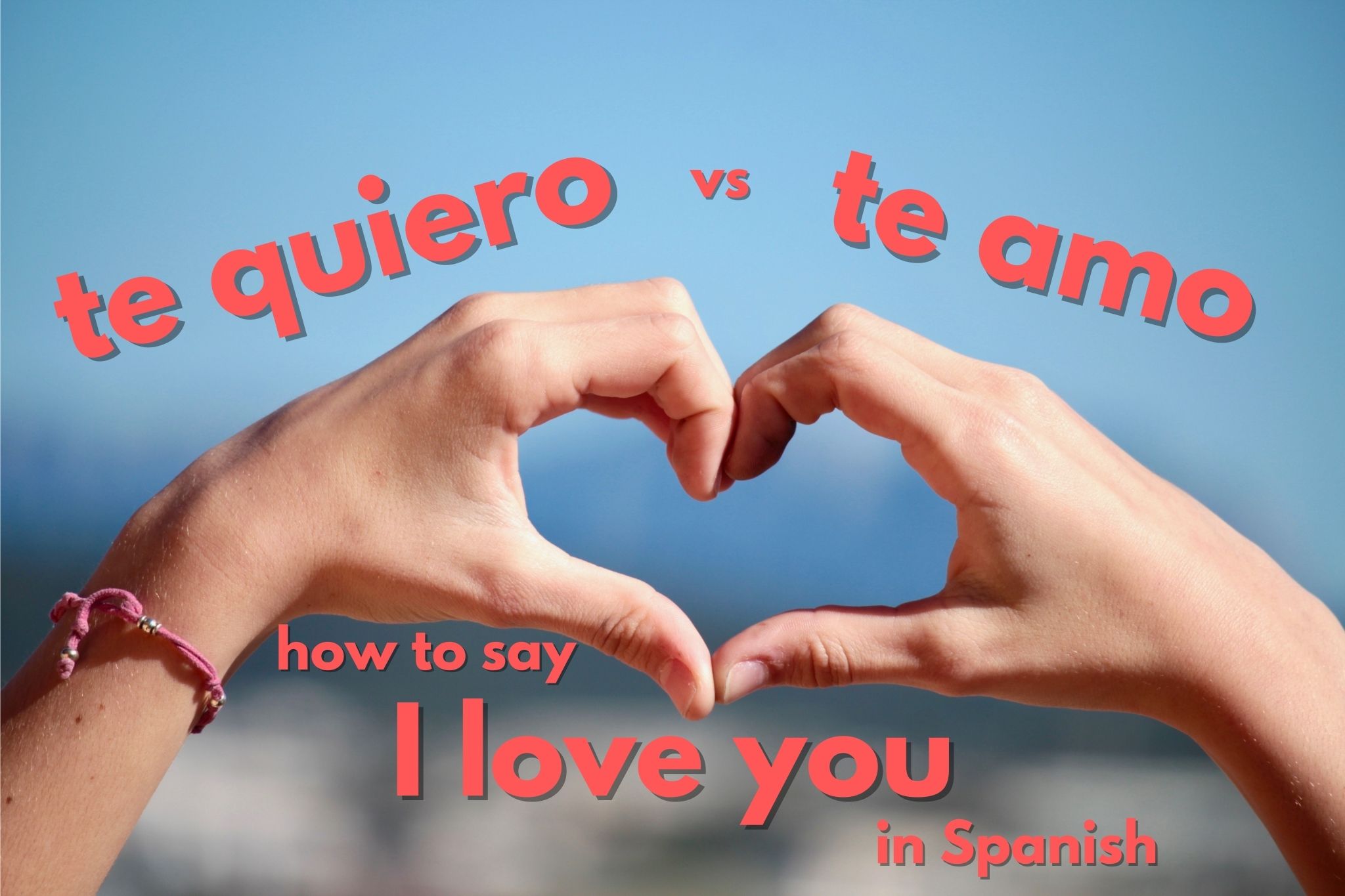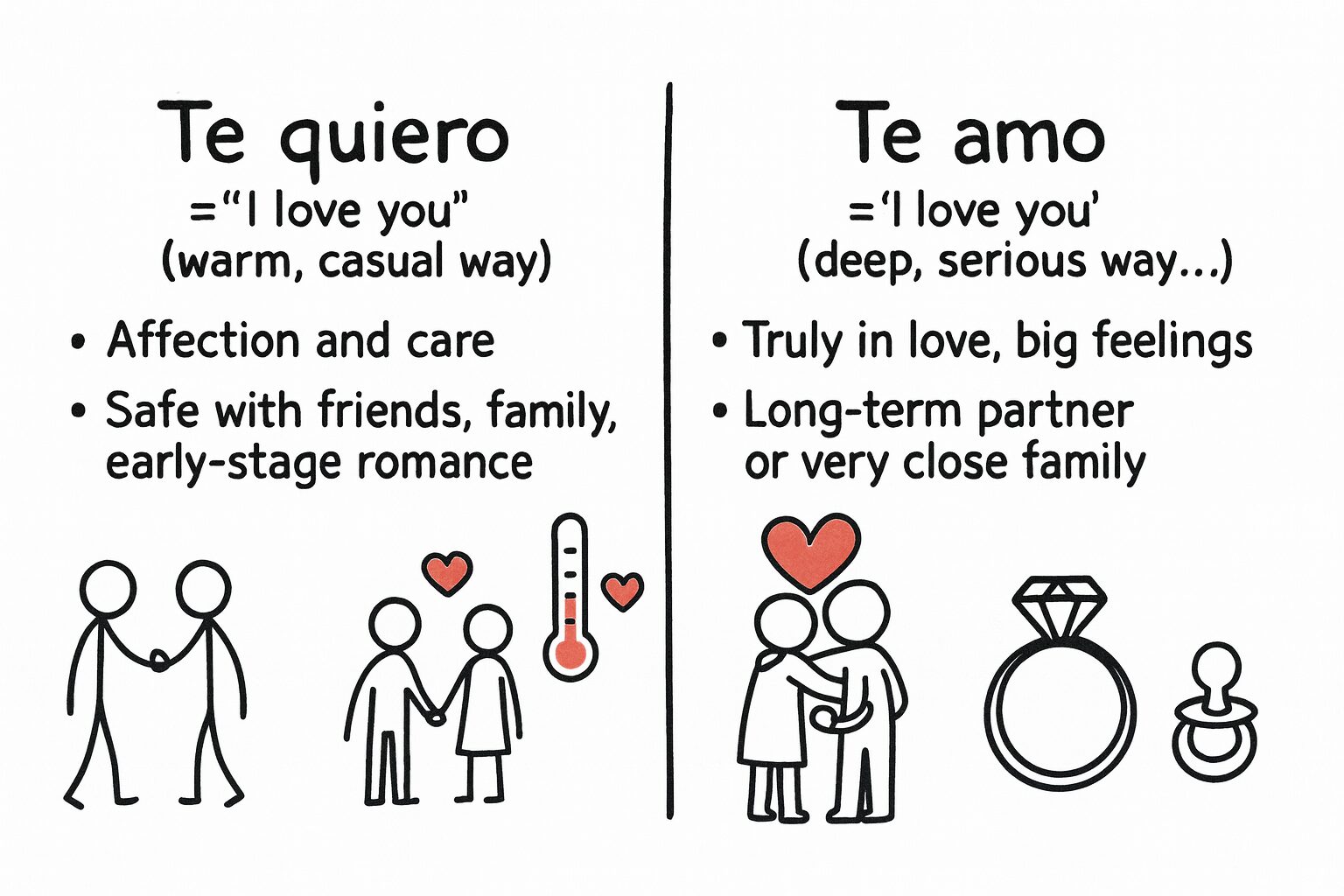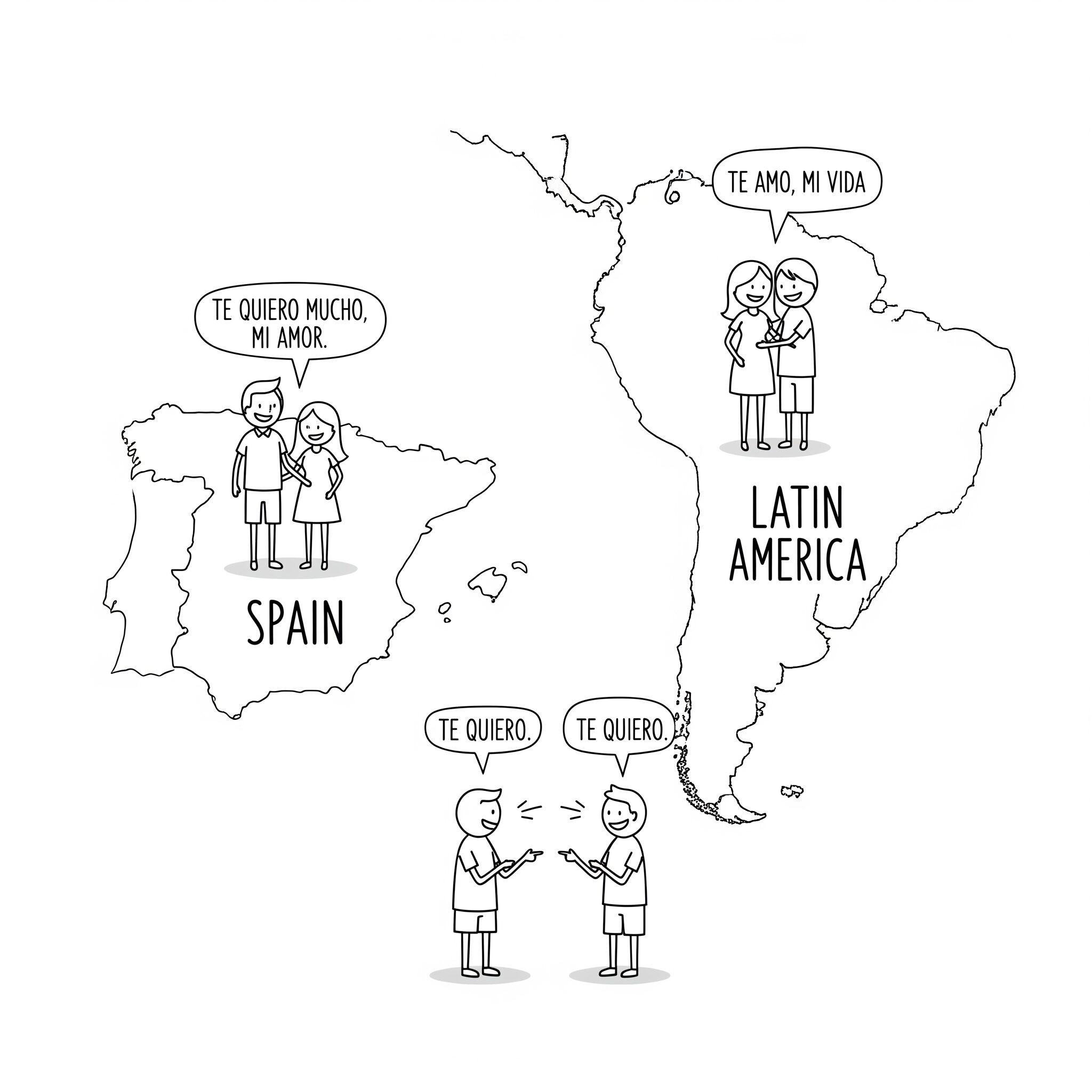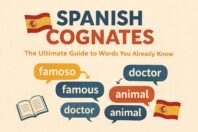Te Quiero vs Te Amo: How to Say I Love You in Spanish

Get our free email course, Shortcut to Conversational.
Have conversations faster, understand people when they speak fast, and other tested tips to learn faster.
More infoLearning to say “I love you” in Spanish is a tiny bit more layered than in English. There are two main phrases, and they feel different: “te quiero” (warm, everyday love) and “te amo” (deep, serious love). In this guide, you’ll learn exactly when each one fits, how friends, family, and partners use them across Spain and Latin America, and a tiny bit of grammar so you can say them confidently.
“Te quiero” vs. “te amo” in Spanish: The quick answer
- “Te quiero” = “I love you” in a warm, casual way.
- Affection and care. Safe with friends, family, and early-stage romance.
- “Te amo” = “I love you” in a deep, serious way.
- Truly in love, big feelings, long-term partner, or very close family.
Rule of thumb: If you are not sure, say “te quiero”. It is loving without being too intense.
Grammar quick start (you only need this much)
Spanish builds the phrase like this: [direct object pronoun] + [verb].
- Direct object pronoun for ‘you’: te
- Two verbs: querer (to love/like, in this context) and amar (to love, deep)
So:
- Te quiero = I love you (lighter)
- Te amo = I love you (stronger)
Other useful bits:
- I love him: Lo quiero / Lo amo. I love her: La quiero / La amo.
- Do you love me?: ¿Me quieres? / ¿Me amas?
- I love you a lot: Te quiero mucho or Te amo mucho
You do not need full conjugation charts to start speaking. Just remember te + quiero/amo.
“Te quiero” vs “Te amo” in Spanish at a glance
| Phrase | Literal meaning | Real meaning in use | Use with… | Intensity |
| Te quiero | “I want you” (but not in the English sense) | “I love you” in a caring, friendly, or light romantic way | Friends, close family, boyfriend/girlfriend in early stages | Light to medium |
| Te amo | “I love you” | Deep, serious, romantic love; profound family love | Spouse, long-term partner, sometimes immediate family | Strong |
Notes:
- Do not panic about the literal “I want you.” In this context querer naturally means “to love/care for.”
- “Te amo” is beautiful but heavy. Use when you mean it.
Saying “I Love You” in Spain vs. Latin America
Spanish is global, so usage shifts a bit by region. Here are simple patterns to keep you safe.
Spain
- People say “te quiero” far more often, even to their romantic partner.
- “Te amo” can sound poetic or overly dramatic in everyday talk.
- If you are in Spain, “te quiero” covers 95% of “I love you” situations: partners, family, friends.
Mexico
- Clearer separation between the two.
- “Te amo” is common for spouses and serious partners, and sometimes for parents or children.
- “Te quiero” is for friends, extended family, and dating when it is not yet super serious.
Argentina and the Southern Cone
- Similar to Mexico: “te amo” reserved for romantic partners and very close family.
- “Te quiero” for friends, siblings, parents, and early romance.
Colombia, Peru, Andean region
- Friends often use “te quiero” with each other.
- “Te amo” is mostly romantic or a very strong family bond.
Caribbean Spanish and U.S. Latinos
- You will hear both, but day-to-day affection stays with “te quiero”.
- “Te amo” appears in intimate contexts, proposals, vows, or songs.
Bottom line: If unsure, “te quiero” works everywhere. “Te amo” is perfect when the moment is deeply romantic or family-intense.
Common mistakes to avoid (and how to fix them)
- Taking “te quiero” literally.
You might think it means “I want you” in a physical way. It does not. In this context, it is a normal, sweet “I love you.” Use it freely with friends and family. - Using “te amo” too soon.
Saying “te amo” on date two can feel overwhelming. Use “te quiero” or “me gustas mucho” in early dating. Save “te amo” for when it is truly serious. - Mixing up “me gustas” and “te gusto.”
- “Me gustas” = I like you (romantically).
- “Te gusto” = You like me.
One letter flips the meaning. When confessing, say “me gustas”.
- Forgetting person agreement with “encantar.”
To say “I love you” in the sense of “I adore you,” say “me encantas” (you enchant me), not “me encanta tú.” - Over-dramatic TV phrases in casual contexts.
Expressions like “eres el amor de mi vida” are great, but use them when the moment matches. Day to day, keep it simple: “te quiero mucho,” “me encantas,” “te adoro.”
Alternatives to “I Love You” in Spanish
Use these when “I love you” feels too soon, too strong, or just not quite the right flavor.
Early feelings or flirting
- Me gustas. = I like you (I am into you).
- Me gustas mucho. = I really like you.
- ¿Quieres salir conmigo? = Do you want to go out with me?
Strong admiration without the heavy L-word
- Me encantas. = I love you / you knock me out (very strong liking).
- Me encantas tal como eres. = I love you just the way you are.
Deep affection, softer than “te amo”
- Te adoro. = I adore you. (Warmer than “te quiero,” lighter than “te amo.”)
- Te adoro con todo mi corazón. = I adore you with all my heart.
Clear romantic confession
- Estoy enamorado de ti. (male speaker) / Estoy enamorada de ti. (female speaker)
= I am in love with you.
Passion (use with care)
- Te deseo. = I desire you. (Physical attraction; context matters.)
Cute pet names (add to any sentence)
- Mi amor (my love)
- Mi vida (my life)
- Mi corazón / corazoncito (my heart / little heart)
- Cariño (darling)
- Mi cielo / cielito (my heaven / little heaven)
- Mi rey / mi reina (my king / my queen)
Examples:
- “Te quiero, mi amor.”
- “Me encantas, cariño.”
- “Te adoro, mi vida.”
Mini phrase bank (plug-and-play lines)
- To a close friend: “Eres mi mejor amigo. Te quiero mucho.”
- To a sibling: “Hermana, te quiero. Gracias por todo.”
- Early dating: “Me gustas mucho. Quiero conocerte mejor.”
- Getting serious: “Te quiero y siento que estoy enamorado de ti.”
- Big moment: “Te amo con todo mi corazón.”
- To a parent: “Mamá, te quiero mucho” (Spain) or “Mamá, te amo” (many parts of Latin America).
- To soften a too-strong moment: “Te quiero, como amiga/o.”
Quick FAQ (the doubts everyone has)
Can I say “te quiero” to friends?
Yes. It is standard and sweet. Friends, cousins, grandparents, your dog. Go for it.
Is “te amo” only for romance?
Mostly, yes. Many people also say it to immediate family (parents, children). Between friends, it can sound too romantic.
What should I say to my boyfriend/girlfriend?
If the relationship is new or casual: “te quiero” or “me encantas.”
If it is serious and you truly feel it: “te amo.”
How do I say “love ya” quickly in a text?
“Te quiero!” or “Tqm” (text shorthand for “te quiero mucho”).
How do I say “I like you” romantically without the L-word?
“Me gustas” or “me gustas mucho.”
How do I avoid sounding too intense?
Choose “te quiero”, add a pet name, and maybe “mucho”: “Te quiero mucho, cariño.”
Practice mini-dialogues (short and realistic)
A: “Gracias por ayudarme hoy.”
B: “De nada. Te quiero.”
A: “Me gustas mucho. ¿Quieres salir el viernes?”
B: “Sí, me encantas. Vamos.”
A: “Hoy cumplimos un año.”
B: “Te amo. Gracias por este año.”
A: “Eres la mejor abuela.”
B: “Ay, mi cielo, yo también te quiero.”
Recap you can remember
- Spanish has two main “I love yous”: “te quiero” (lighter) and “te amo” (stronger).
- “Te quiero” is perfect for friends, family, and early romance.
- “Te amo” is for deep, serious love: long-term partner, big declarations, or very close family.
- Regional habit: Spain favors “te quiero” even for partners; Latin America uses both, with “te amo” reserved for serious love.
- Avoid classic mistakes: do not fear “te quiero,” do not rush “te amo,” and get “me gustas” vs “te gusto” right.
- You have plenty of alternatives: me gustas, me encantas, te adoro, estoy enamorado(a) de ti, plus adorable pet names.
If you remember one line, make it this: When in doubt, say “te quiero”: it is loving, natural, and never too much.







